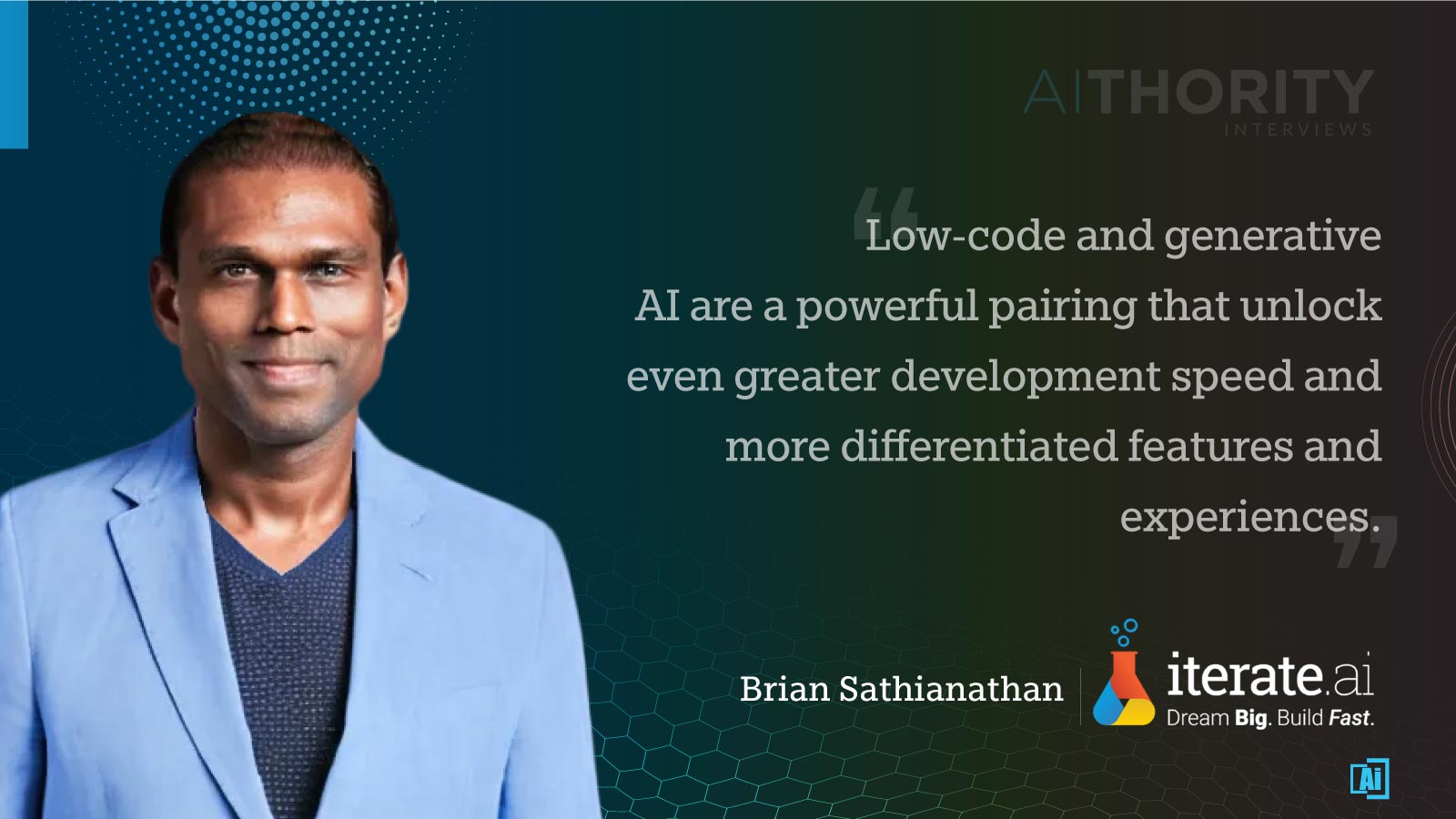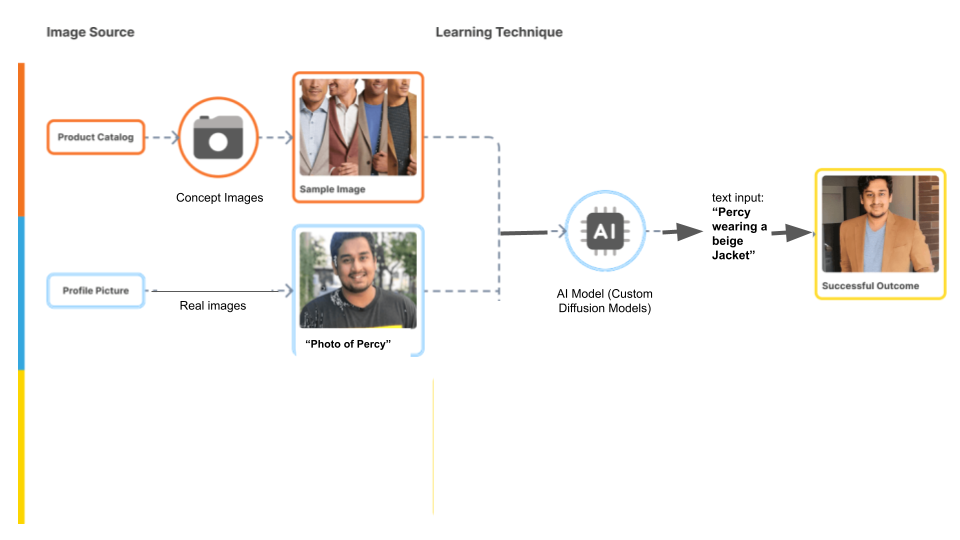AiThority Interview with at Brian Sathianathan, Co-Founder and CTO at Iterate.ai

Iterate.ai was founded around a decade ago and is built around two AI-fueled solutions—what are they and how did the company get started?
The idea for Iterate.ai came from the shared experiences that my co-founder (and CEO) Jon Nordmark and I had in the early 2010s when we were both on the board of a startup accelerator based in Ukraine. We met countless startups delivering truly impressive and innovative technologies—but that were largely unknown on the global stage. Those experiences inspired us to create a search engine specifically built for end-user organizations to find and vet global startup partners developing the precise technology to match those customer goals. In 2013 we launched Iterate.ai and our AI-curated database platform called Curate. Curate has since evolved into Signals, and tracks more than 16 million startups and enterprises and their technology offerings.
Working with enterprises to integrate those exciting emerging technologies revealed another pressing need: organizations with legacy systems were struggling to connect that infrastructure with the innovative new software from the partners they enlist. In 2017 we introduced our Interplay low-code AI platform. Interplay makes it much simpler to integrate legacy and emerging technologies while enabling enterprise developers to deliver applications as much as 17x faster.
What are some of the enterprise-level low-code technology developments that you are currently focusing on, and how have those evolved over the past few years?
Low-code strategies—when executed correctly—empower organizations to quickly and seamlessly leverage what we call the five forces of innovation: AI/ML, IoT, blockchain, data access, and integration of the most nascent and emerging technologies. Without low-code, each of these is challenging for enterprises to implement. Hiring experts in these fields is prohibitively costly for many organizations—particularly for in-house AI/ML and data expertise. But beyond the expense, those talents are simply hard to come by; recruitment and retention are not easy, even if you have the budget.
At the same time, the pandemic actually increased organizations’ appetites for digital innovation. Countless customer interactions suddenly required digital-only interfaces. Workforces went digital as well, calling for new tooling and greater efficiency. Low-code offered a lifeline for myriad organizations that suddenly needed to develop numerous high-quality, highly-capable applications very quickly. With low-code modules enabling mainstream developers and even citizen developers to harness emerging technologies like AI/ML that would otherwise require specialized expertise, organizations can assemble applications with impressive modernized features. They can bring them to market, and iterate those features to align with market needs at a clip that outpaces competitors.
That’s been the focus in recent years: enabling enterprise-grade low-code capabilities that allow existing development teams to harness the latest innovations and deliver leading application experiences.
Iterate.ai just released generative AI capabilities into Interplay. Why is this important for customers?
Low-code and generative AI are a powerful pairing that unlock even greater development speed and more differentiated features and experiences. We have just added integrations for Stable Diffusion, ChatGPT, and other OpenAI tools. It’s important to note (and differentiator): our generative AI integrations combine with our own solutions to always allow companies to own their IP with custom AI models.
Our new generative AI integrations add three core features to Interplay’s low-code environment. First, a code generator built on OpenAI equips developers with text-to-code functionality similar to GitHub Copilot. Developers can write text and receive AI-produced low-code suggestions throughout development. Second, text-to-image capabilities powered by Stable Diffusion enable users to enter text prompts and quickly produce images, with outputs defined by brand templates. Third, we’ve added Interplay training and support powered by GPT-3, so that developers can leverage conversational generative AI search, text completion and more to ask natural language questions and get quick answers.
 In this way, low-code and generative AI enable organizations to create applications even faster while using application features rapidly generated by AI—such as product descriptions, product images, conversational experiences, FAQs, blog articles, and more. Expect low-code developers to harness generative AI in delivering transformative customer experiences, driven by virtual sales assistants, automated advice platforms, and domain expert chatbots.
In this way, low-code and generative AI enable organizations to create applications even faster while using application features rapidly generated by AI—such as product descriptions, product images, conversational experiences, FAQs, blog articles, and more. Expect low-code developers to harness generative AI in delivering transformative customer experiences, driven by virtual sales assistants, automated advice platforms, and domain expert chatbots.
Generative AI will only improve as it continues to iterate, meaning that its low-code-enabled use cases will only grow into the future.
How do you incorporate various advanced technologies into Interplay to create AI-powered solutions for customers?
As far as we’ve observed, Interplay is the only low-code AI platform in the world that allows developers to quickly create low-code application prototypes and then utilize the exact same code in high-scale enterprise production deployments.
Interplay provides developers with hundreds of modules that abstract code for implementing emerging technology functionality. Developers at companies of any size can easily assemble these modular code building blocks in our drag-and-drop interface to build powerful production-ready applications for tons of use cases across industries. Harnessing Interplay components, companies regularly build and test AI/ML models, leverage AI/ML and natural language processing to offer cutting-edge voice applications and tap into the power of customer conversations, utilize big data previously siloed across their organizations, enable headless commerce, and much more.
What kind of existing infrastructure does a company need to benefit from Interplay?
By design, Interplay is compatible with any existing IT infrastructure. Enabling compatibility among emerging technologies and an organization’s legacy systems speaks to Interplay’s core purpose. Interplay similarly removes requirements around developer team structures or preexisting expertise; we democratize access to advanced technology capabilities such as AI/ML.
To support teams adopting a low-code strategy with Interplay, we also offer hands-on partnership and support to help teams shape their project strategies and realize the possibilities of the powerful technologies at their disposal. We also provide a vast knowledge base that includes detailed training videos and materials, covering everything from getting started with low-code to the specifics of how to build advanced features.
What is your take on the opportunity for organizations when it comes to utilizing AI/ML right now? How does it fit into enterprises’ other top-of-mind initiatives, say around IoT and big data?
AI/ML is clearly in the spotlight right now—and that’s unlikely to ebb anytime soon. Organizations across industries have huge opportunities to transform their existing practices with unprecedented new automation and accuracy, as well as never-before-seen features. We’re seeing organizations use Interplay to rapidly introduce AI/ML capabilities across countless creative use cases. For example, retailers are using AI/ML to ensure that customer experiences are not only personalized but also contextualized, able to understand and address customer needs in the moment with more granular personalization. AI/ML further automates the work of iteratively improving and optimizing those customer experiences. Other AI/ML use cases can cover everything from smart chatbots, to frictionless shopping experiences, to assessing health risks, to public safety.
Organizations often leverage low-code to pair AI/ML with big data and IoT capabilities, with powerful results. On IoT factory floors where downtime losses can almost-instantly reach into the six-figures, AI/ML, big data and IoT technologies combine to offer preventative maintenance that anticipates issues and avoids those major costs. In other use cases, these technologies are also frequently applied to optimize international supply chain logistics, and can even support real-time security video analysis able to detect weapons and other localized threats at schools and businesses.
Lastly, what are your views on the future of software optimization with low-code analytics and automation?
One of the greatest advantages of low-code is the ability to quickly analyze the effectiveness of an application feature and then implement iterative tweaks to optimize software performance around an organization’s goals. Exciting advances like generative AI will only expedite that low-code optimization process, and yield more beneficial results for businsses going forward.
Thank you, Brian ! That was fun and we hope to see you back on AiThority.com soon.
[To share your insights with us, please write to sghosh@martechseries.com]
Brian is a serial entrepreneur, board member, executive, inventor and was one of the members of the first iPhone teams. He is currently in the process of building a fantastic company in the low-code AI space called Iterate.ai.
2001-07: He worked at Apple for eight years. I became one of the early key members of Apple’s Secret Products working on the first iPhone. 2007-11: After Apple, he was the Founder & President of Avot Media, enabling streaming video into a wide variety of mobile smartphones and tablets.
2011-13: Post Avot, because of his passion for startups, he joined Turner Broadcasting and helped start Media Camp. During this time, we engaged on the business side and made 13 seed investments into media startups. Two of them exited shortly post-investment.
90% of Iterate’s revenue comes from our patented drag-n-drop, low-code AI app platform — named Interplay. $1 billion to $60 billion enterprises use Interplay because it facilitates 17x faster prototyping of digital, AI, and IoT solutions. More importantly, it also scales those digital apps straight into production, whether on the Web or even on the Edge. Today, Interplay processes AI on Edge Computers in more than 3,000 locations. Nvidia, Google Cloud, and AWS are formal partners.


Comments are closed.